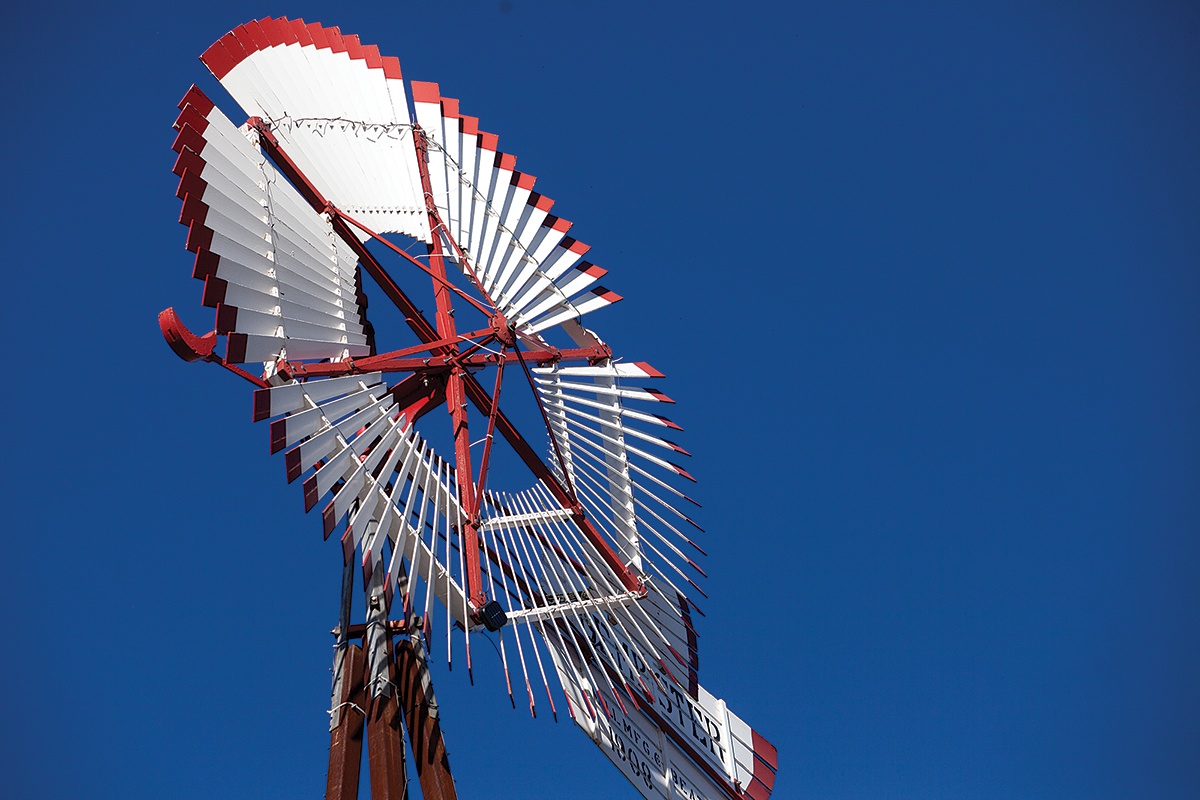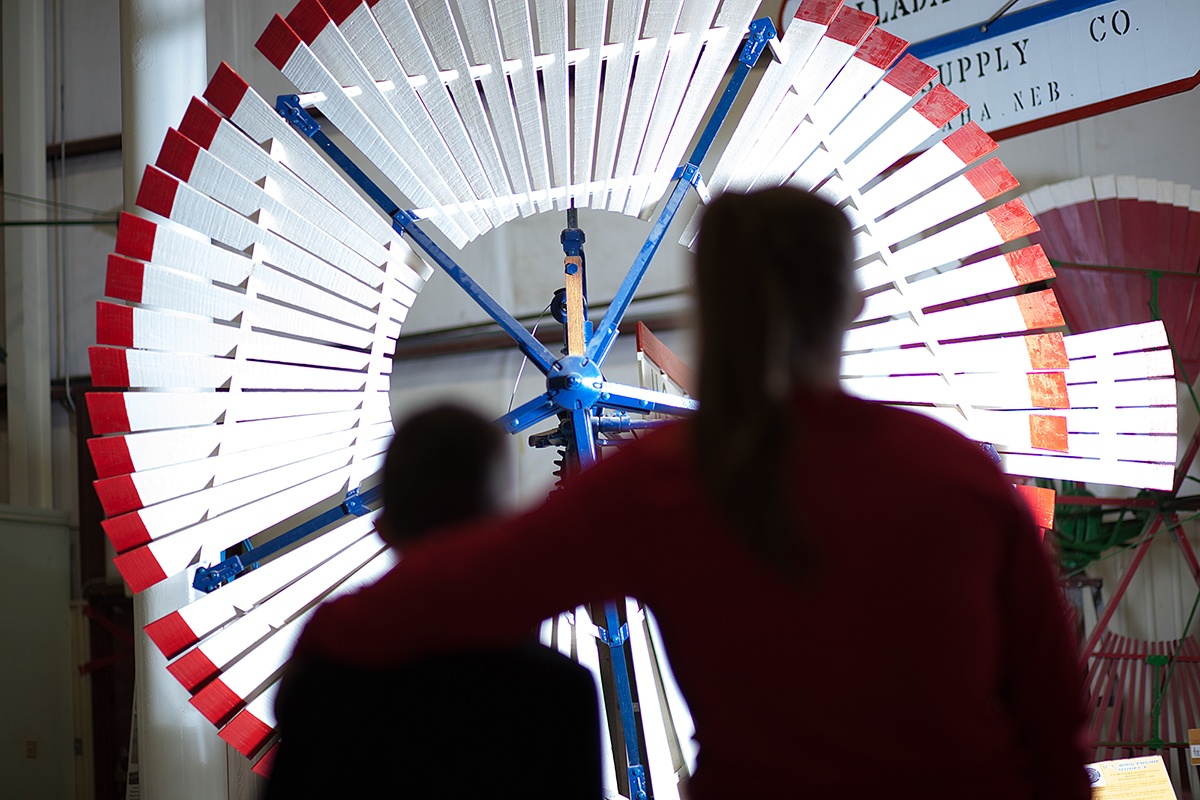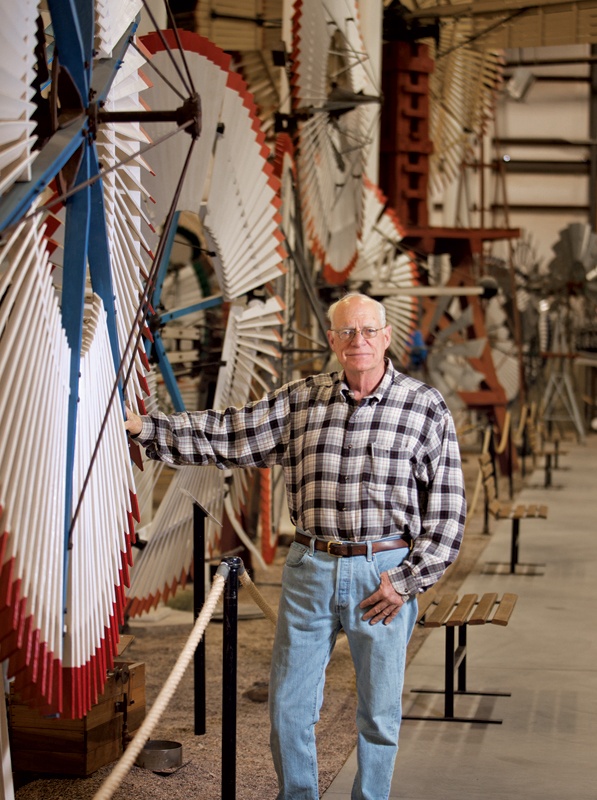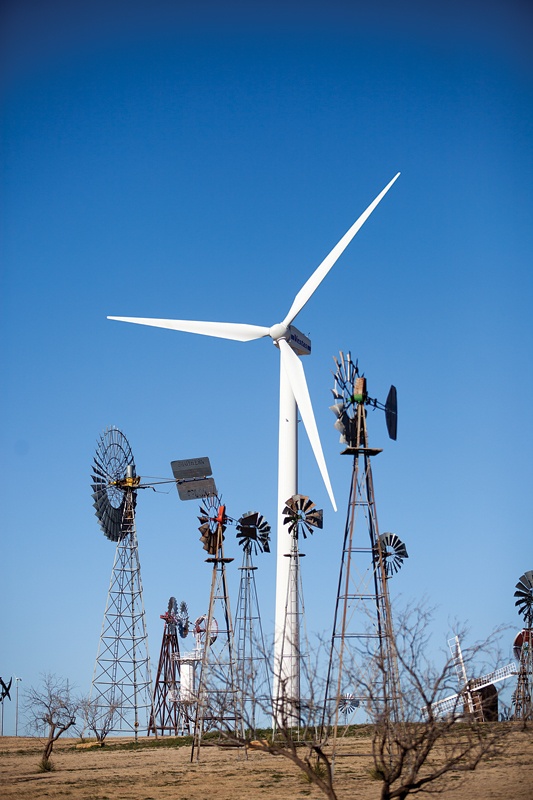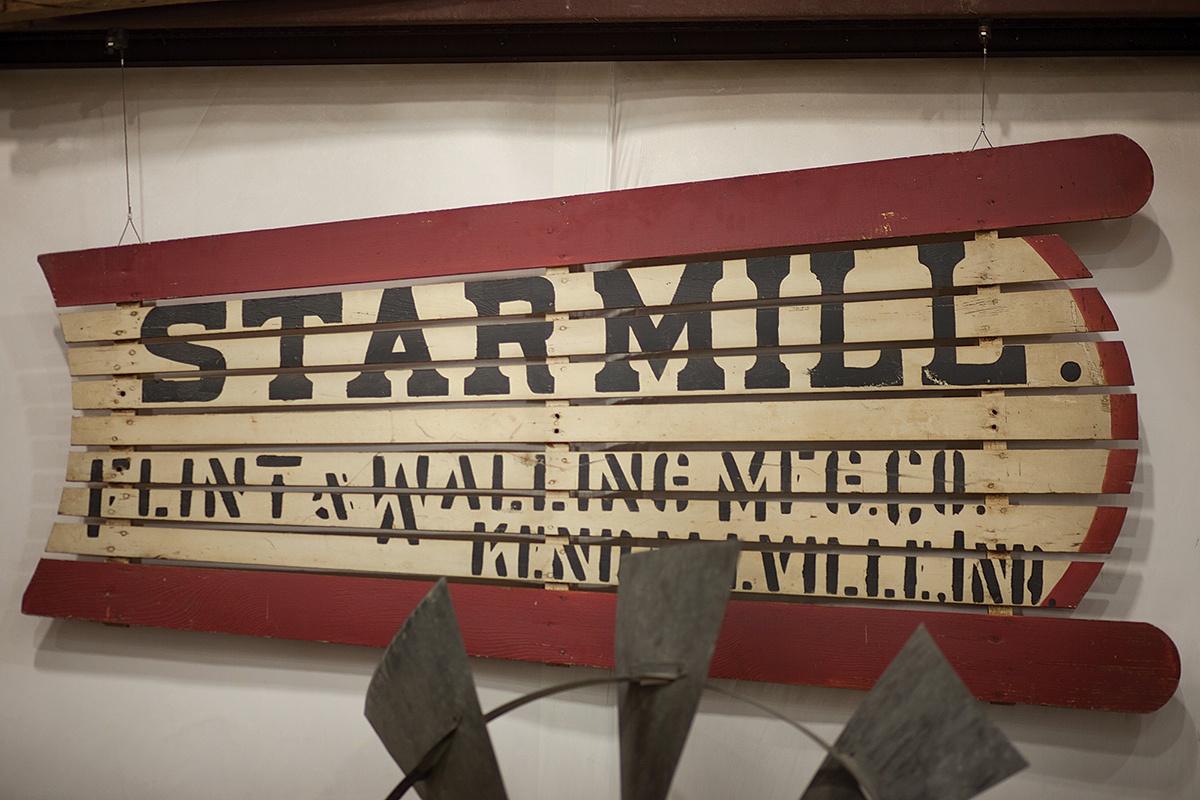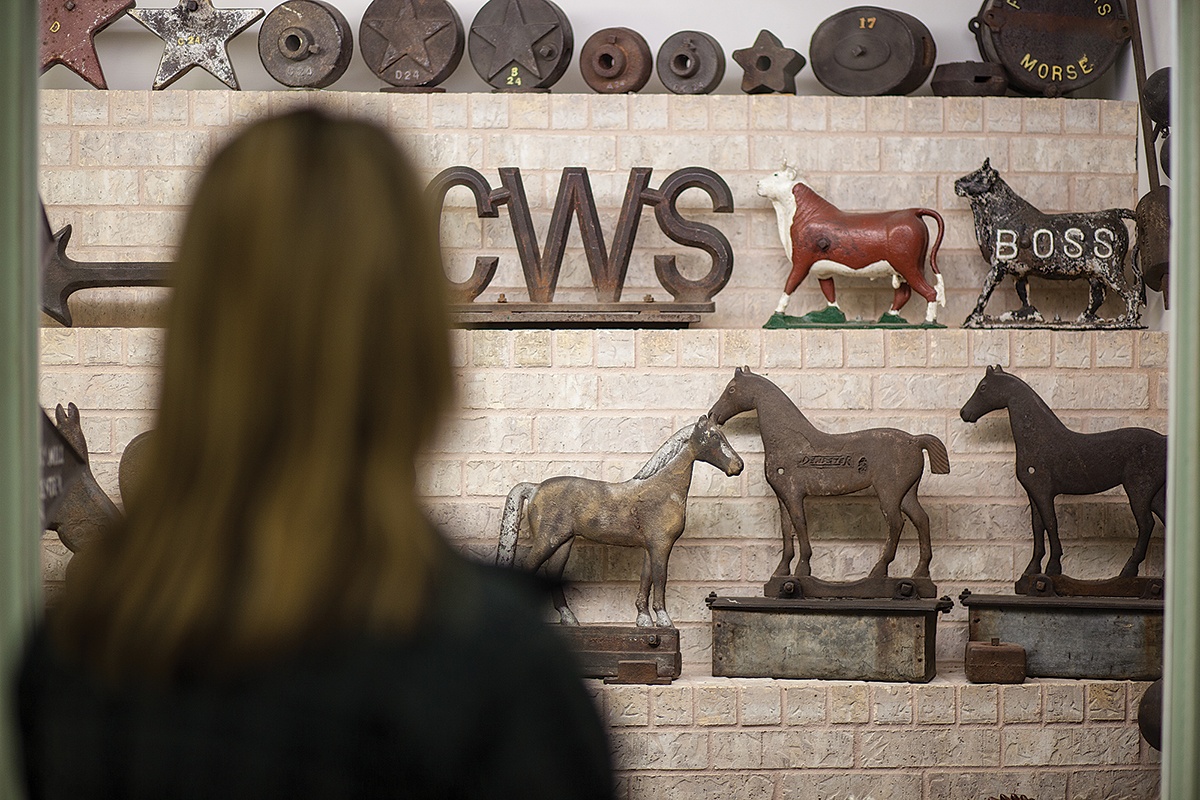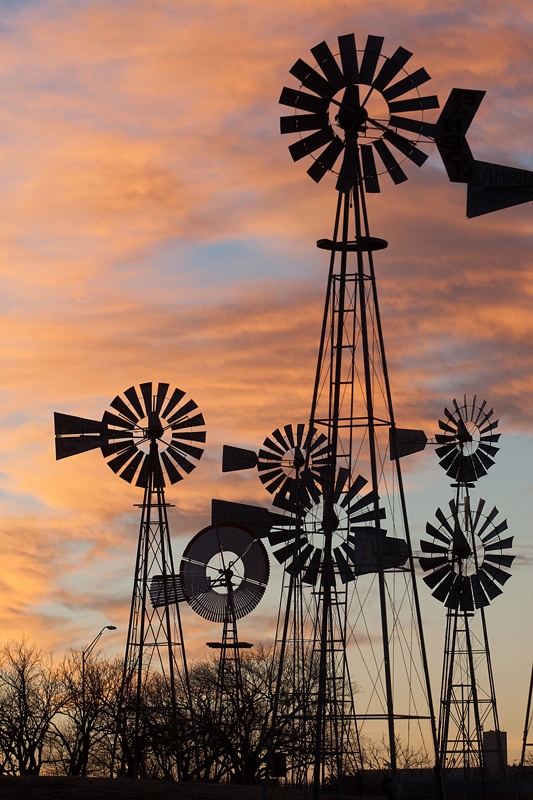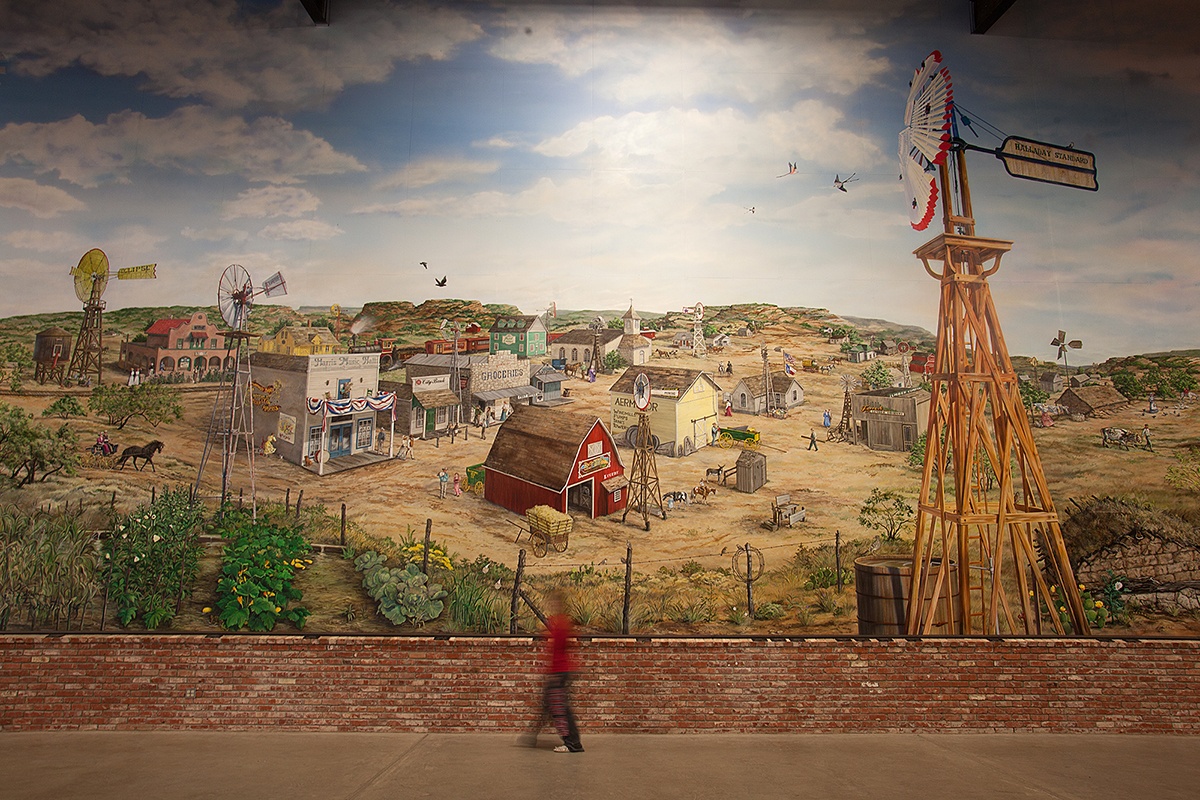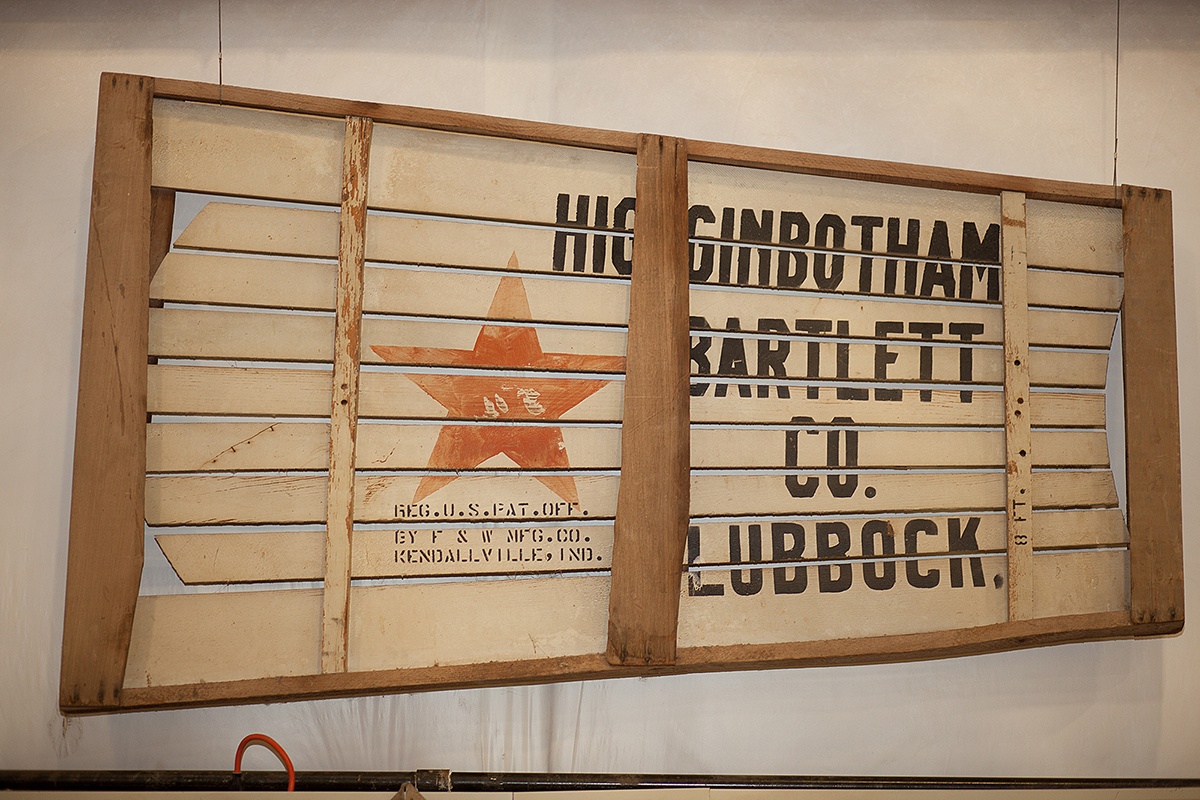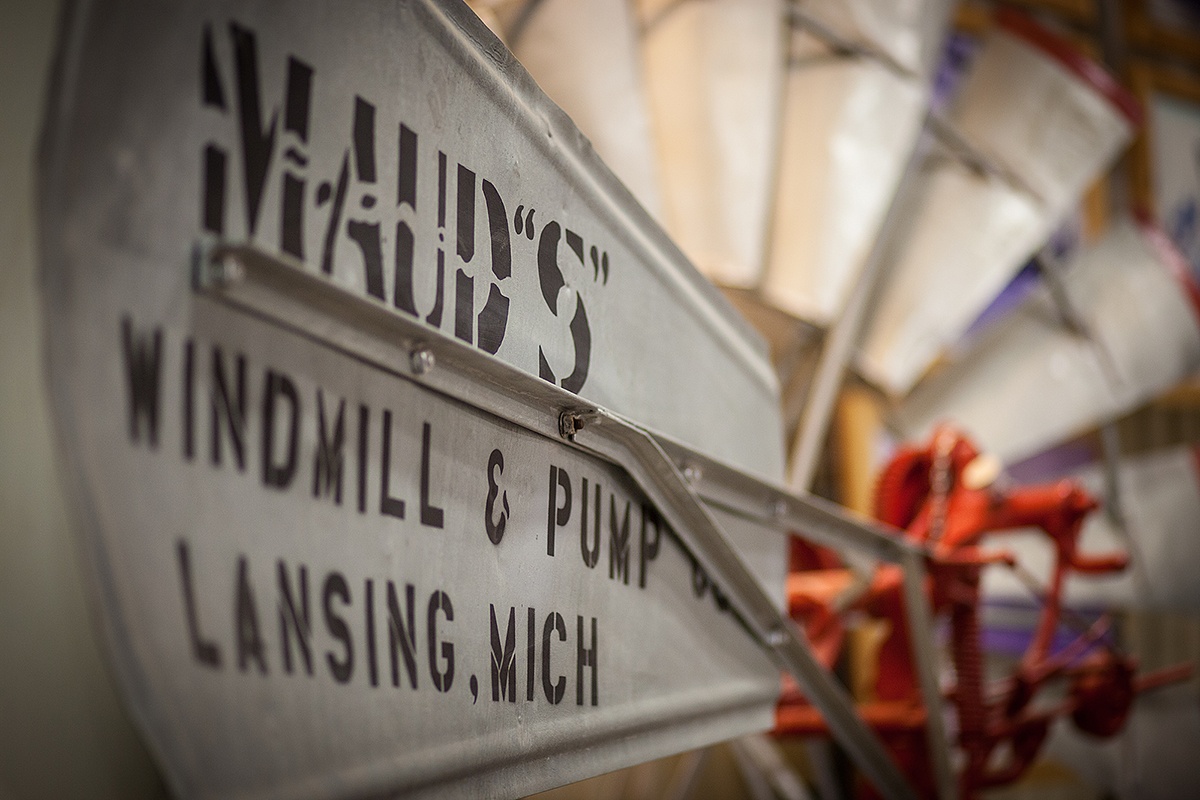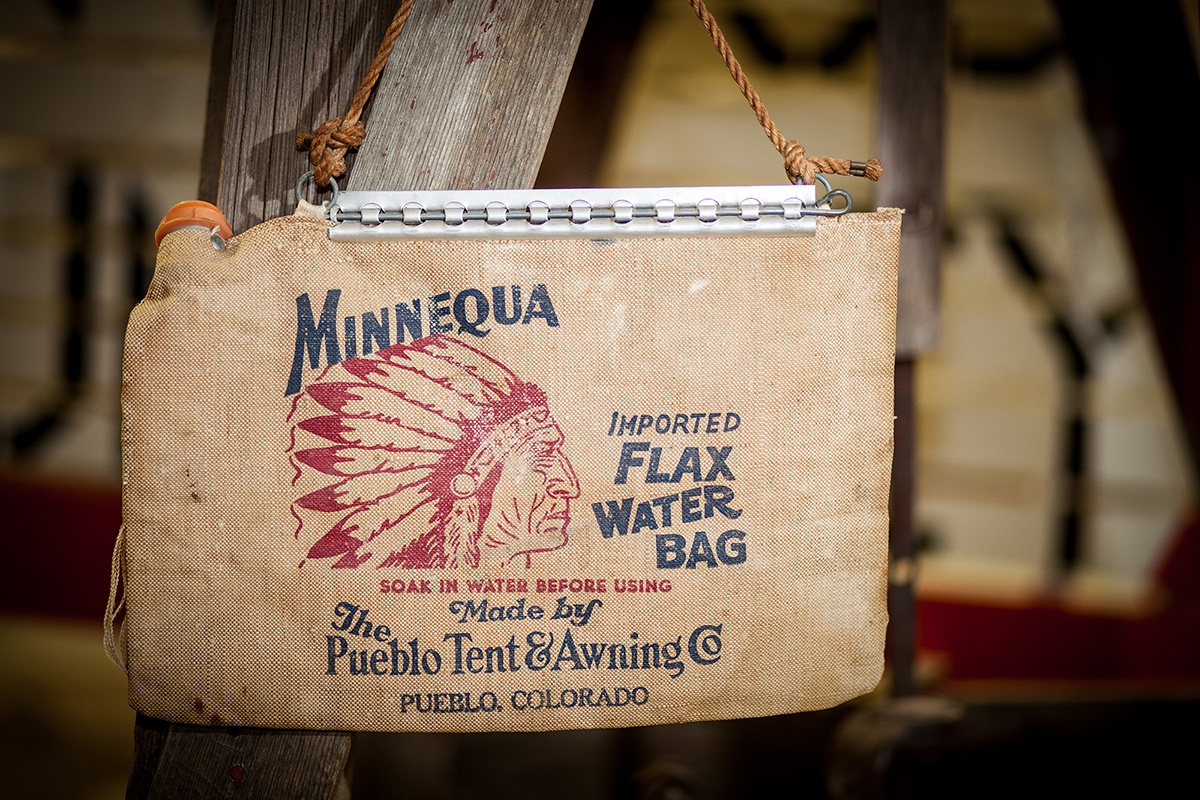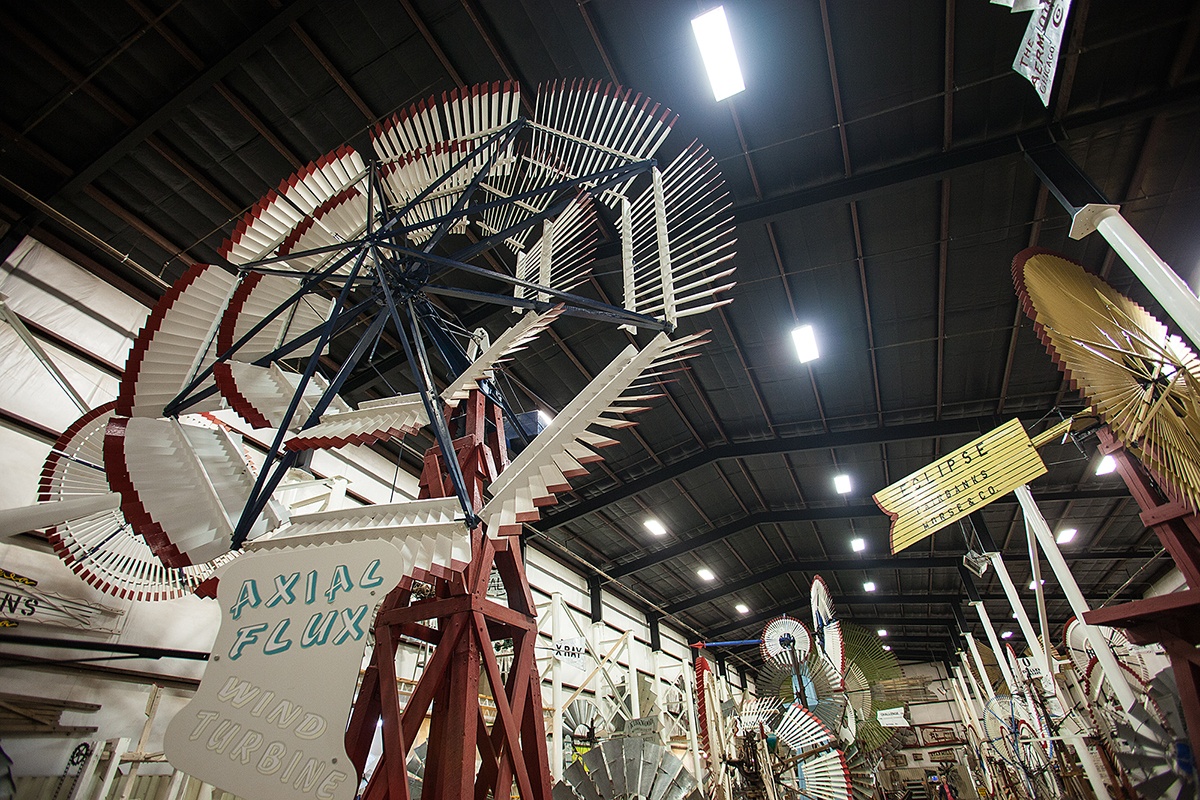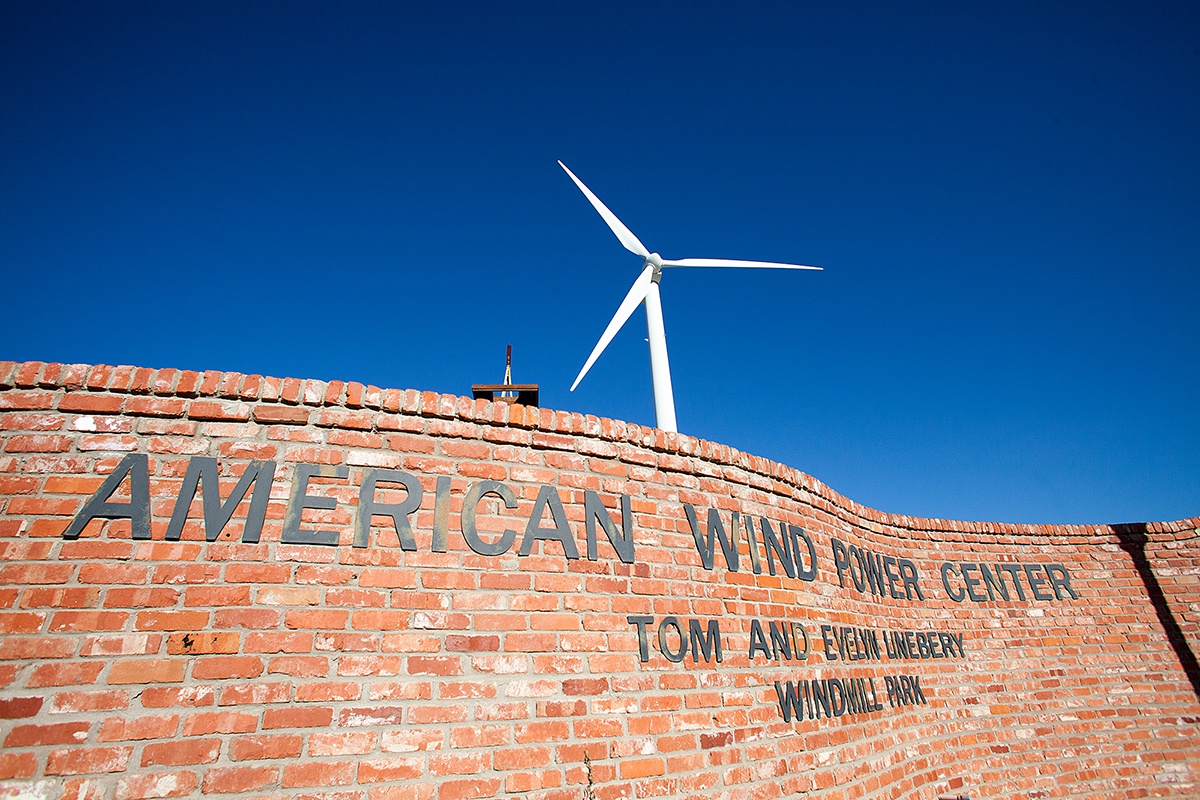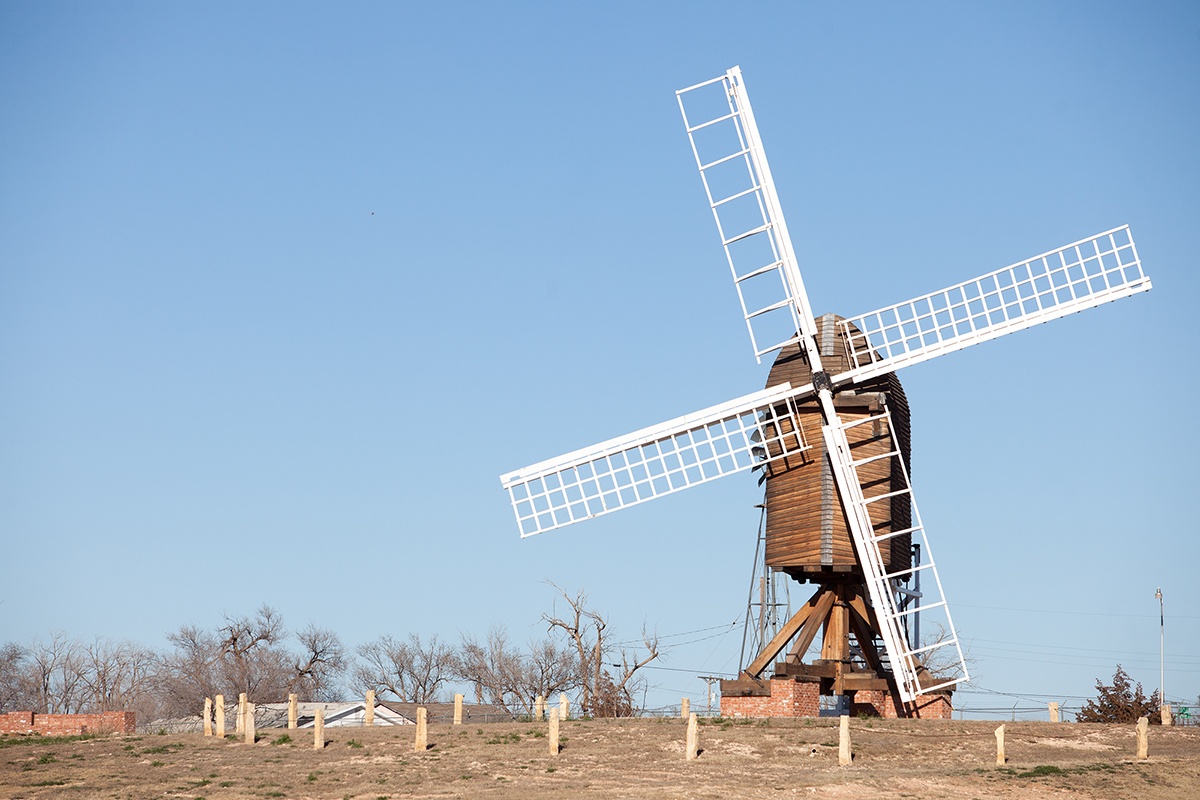In the middle 1800s, when the railroads and pioneers moved west of the Mississippi, they discovered that there was less and less surface water,” explains Coy Harris, executive director for the American Wind Power Center in Lubbock, as we stroll among windmills of varying size and function. We are touring the main hall of the center’s museum, and Harris explains, “In order for the railroads to cross major parts of Texas, they needed water wells, and the only good method of pumping them was with a windmill.”
The Wind Power Center documents a comprehensive timeline of windmill development. Throughout the 33,000-square-foot center, windmills of diverse shapes and sizes draw your attention. Different manufacturers implemented individual ideas on design and mechanical function. In the heart of the exhibit building, windmills line a deep pit so that the parts of mechanical interest are at just above eye level, and visitors can easily examine variations in gearbox design and each scheme for fan and tail. Despite manufacturing variations, virtually all of the American windmills were built with the same purpose in mind: to convert wind power into the mechanical action required to pump water.
On the Texas High Plains, wind is an almost-constant companion. In many ways, the area is a meteorological battlefield: Warm and cool air masses continually contend for the atmospheric upper hand, and it’s not unusual to have a cold front deliver a 20 mph sustained northerly wind one day and then a 25 mph southwesterly wind the next, as high pressure moves in to supplant the previous day’s cold air.
Despite the weather warfare, the High Plains offer a dry climate with almost no reliable surface water and only sporadic rains. Pioneers harnessed the wind and leveraged its abundant power to turn the windmill blades that, in turn, drew water from the vast Ogallala Aquifer. With its ability to tap into a vast supply of underground water, the windmill helped transform the semiarid plains into a verdant, crop-producing breadbasket. In recent decades, because of the region’s almost ever-present wind re-sources, it’s quickly become the center of wind energy production.
Honoring the Wind
The Texas Plains region holds an allure for poetic souls. Writing to a friend, famed 20th-century artist Georgia O’Keefe admitted, “I lived on the plains of North Texas for four years … that was my country—terrible winds and a wonderful emptiness.”
The American Wind Power Center honors the wind and celebrates the contraptions used to harness the power of the abundant energy source. Even though many of its windmills are of the familiar variety that you often see across the far reaches of Texas rangelands, others are more exotic, like the twin-wheeled windmill or the unusual Flowerdew Hundred Postmill used to grind grain. While the Flowerdew Hundred Postmill looks Dutch, it actually originated on a farm in Virginia.
The Wind Power Center grew out of a grassroots effort and was initially established in 1993 by Harris and the late Billie Wolfe. Wolfe was a professor at Texas Tech University and a windmill enthusiast. She often traveled the country to document existing windmills and encourage locals to conserve them. Wolfe partnered with Harris, who at the time was an engineer and owner of a local company that specialized in designing electricity-generating wind turbines. The two amassed a small collection of windmills, which they kept in storage until 1997. That year, the city of Lubbock donated the land where the restored mills were erected and prepared for display. The center now boasts more than 160 windmills.
Officially opened in 1998, the center hosts nearly 20,000 visitors each year. The museum’s collection is so comprehensive that more than 75 percent of all American-made windmill varieties are included in the exhibit. The remaining 25 percent are exceedingly rare and difficult to find, according to Harris. He says that many of the windmills the museum hasn’t acquired were made by small companies that might have made a single model of a mill and then gone out of business.
“Historically, when a windmill would break, people would just throw it away,” he says. “To them, it was simply a tool that didn’t work anymore. So they replaced it.”
Everything was not lost, of course. In the exhibit hall, rare windmill tails hang on the wall in their original crates, and a small room was created to display a collection of windmill weights that manufacturers once used. Outside the functionality of the contraptions, the tails and weights stand out as pieces of Americana. The tails are colorfully painted in patriotic hues while the tail weights represent horses, cattle, crescents and squirrels, among other things.
“The first thing I hear when people walk into the exhibit hall is ‘wow!’ ” says Tanya Meadows, director of marketing for the center. “Most never knew that there were so many different kinds of windmills.”
Harris and Meadows ardently believe in educating the public about the value of the wind and the valuable service these tools provide. In 2007, the center commissioned an immense mural to realistically portray the importance of the windmill. In a spacious event room adjoining the exhibit hall and gift shop rises the 6,000-square-foot mural, which depicts the windmill in context with the local culture from the late 1880s through today.
“The wind is a valuable resource,” Meadows says. “This part of the world would not have been livable if it had not been for the windmill to pull the water from underground.”
“Windmills became a large industry which lasted until the 1930s and 1940s,” says Harris. As cooperatives formed across the state to bring electricity to remote areas, it slowly supplanted wind as the preferred power for pumping water.
“In the 1950s, when electricity was available in most locations, the windmills became more rare. Today, fewer and fewer windmills are used on ranches to pump water,” Harris says. “You just can’t find people to work on them anymore.”
A New Generation of Windmills
Over the past decade, wind power has seen a renaissance across Texas. Instead of pumping water, wind power is harnessed to turn immense turbines to generate electricity.
The Electric Reliability Council of Texas, which manages about 90 percent of the state’s electric load, says that at the end of April, its system’s wind turbines had a generating capacity of 13,060 megawatts. Texas is the top wind energy producer in the nation, and in 2014, wind power accounted for 10.6 percent of ERCOT’s generation. ERCOT set a record the night of February 19 when wind generated 11,154 megawatts of electricity.
Outside the exhibit hall, visitors are dwarfed by a towering, three-bladed General Electric turbine. This functioning unit is the same type you’ll see on wind farms, mainly in the Panhandle, far West Texas and along the Gulf Coast. This specific wind turbine generates electricity that helps power the center.
In response to the recent surge in wind power, another 33,000- square-foot building is under construction at the center. Inside the new hall, electric generation technology will be one of the key features. Right now, the building is simply a concrete and metal skin, but already installed in the 15-foot pit is an early version of a wind-powered electric turbine designed in the late 1970s. Ultimately, the turbine will be a hands-on display where visitors can manipulate the pitch of the blades and interact with other controls.
The new exhibit hall, expected to open later this summer, will also feature a miniature version of the city of Lubbock from around 1910 to the early 1960s—the era when windmills and trains were commonly used. Weaving through the town and around the new hall will be 3,000 feet of miniature train tracks that will run on three levels.
Harris points out that the museum is solely donor-supported, but the labor of love is worth the effort. “It is important to have examples of these American inventions so that future generations can see them and watch them work.”
——————–
Writer and photographer Russell Graves travels far and wide from his home in Childress. He is a member of South Plains EC.
